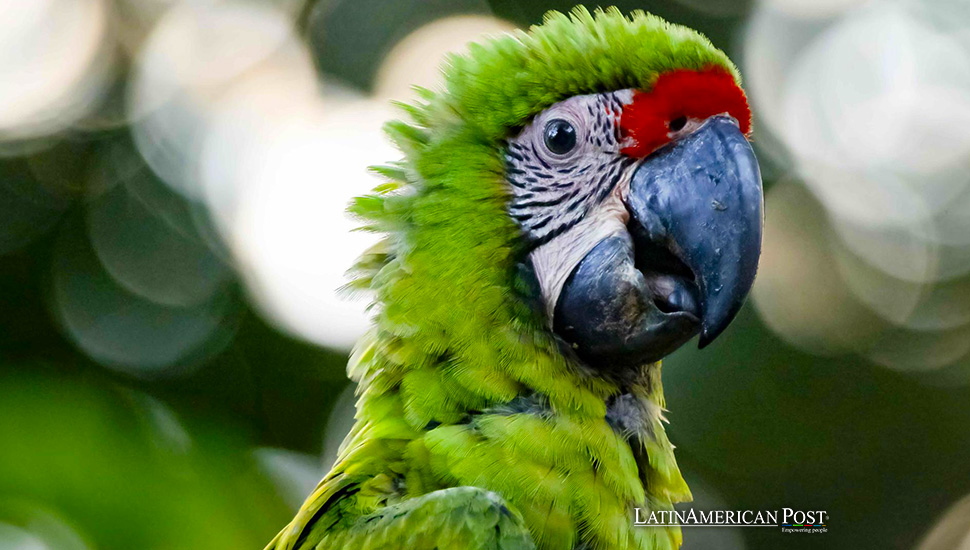Costa Rica’s AI-Driven Project to Monitor Endangered Scarlet Macaws

In a groundbreaking conservation effort, Costa Rica launches an AI and eco-acoustic project to monitor the habitat of the elusive scarlet macaw (Ara ambiguous), aiming to gather vital data for the species’ protection.
Costa Rica’s Visionary Conservation Project
Costa Rica is stepping into the future of wildlife conservation with an innovative project that blends artificial intelligence and eco-acoustics to study the habitat of the scarlet macaw, a symbol of the nation’s rich biodiversity. The initiative, spanning up to three years, seeks to harness cutting-edge technologies as an ally in the protection and surveillance of this iconic yet hard-to-observe bird.
This ambitious project employs 113 ‘audio-moth’ devices installed across a vast 11,000 square kilometers in the northern and Caribbean regions of Costa Rica. These devices are designed to capture the various sounds made by the scarlet macaw, providing insights into their living areas, feeding cycles, nesting habits, and other valuable data.
Mario Coto’s Vision: Beyond Scarlet Macaws
Mario Coto, the technical director of the National System of Conservation Areas (Sinac), views this as an excellent opportunity to utilize state-of-the-art technologies like artificial intelligence and audiomoths. Initially focused on the scarlet macaws, the project holds the potential to be extended to other species in the future. According to the University of Costa Rica, there are an estimated 300 to 400 individuals of the species in the country, with habitat loss and illegal trade posing significant threats to their survival.
Sinac collaborates with various organizations, including Macaw Recovery Network, the Tropical Scientific Center, Rainforest Connection, and Huawei. The collected data will facilitate a comprehensive and varied analysis, encompassing reproduction periods, the general health of individuals, and the frequency of threats, among other aspects.
Sinac Partners with Organizations and Tech Giants
Heidy Zúñiga, a forest ranger involved in the project, highlighted the technology’s role in simplifying many of their daily tasks. The acoustic monitoring for the scarlet macaw over 11,000 kilometers aims to better understand the bird’s distribution.
The core technical principle of the project lies in eco-acoustic observation and data analysis through artificial intelligence, transforming sounds into high-value information for researchers and Sinac. Devices are strategically installed at selected points to collect acoustic data. Each audio-moth is placed at a height of 20/25 meters in the canopy of mountain almond trees, a species on which the scarlet macaws rely for nesting and feeding.
These devices are synced with an application referencing each unit for precise location tracking. After a year, they are collected, and the information is downloaded for processing and analysis. Subsequently, artificial intelligence converts this data into information suitable for detailed analysis.
The scarlet macaw, weighing around 1.5 kilograms and measuring between 85 and 90 centimeters in length, is distinguished by its feathers reaching up to 40 centimeters. These birds possess a solid and large beak, ideal for eating hard fruits, and are found from Honduras to Ecuador. Notably, they are monogamous, pairing for life.
From Scarlet Macaws to Global Ecology
This project represents a significant leap in wildlife conservation efforts, particularly in a global biodiversity crisis. By leveraging technology, Costa Rica is setting a precedent for how countries can approach the conservation of endangered species in innovative and effective ways.
Moreover, the project offers a model for interdisciplinary collaboration, combining technology, ecology, and conservation. It exemplifies how artificial intelligence can address environmental challenges, presenting a new lens to understand and protect the natural world.
The data gathered through this initiative will not only aid in the conservation of the scarlet macaw but also contribute to broader ecological research. By understanding the birds’ habitat requirements and behavioral patterns, conservationists can develop more targeted and practical strategies to protect them and their environment.
Also read: Mexican Scientists Launch AI App for Real-Time Epidemic Surveillance
Furthermore, the project underscores the importance of acoustic monitoring in biodiversity research. Eco-acoustic methods provide a non-invasive way to study wildlife, reducing the potential for human disturbance in sensitive habitats. This approach is precious for studying elusive or rare species like the scarlet macaw, where direct observation can be challenging.
Costa Rica’s AI and eco-acoustic project to monitor the scarlet macaw is a pioneering effort in the field of conservation. It reflects a growing recognition of the need for innovative approaches to protect endangered species and preserve biodiversity. As this project progresses, it is expected to yield valuable insights that will benefit the scarlet macaw and enhance our understanding of wildlife conservation in the modern era.




